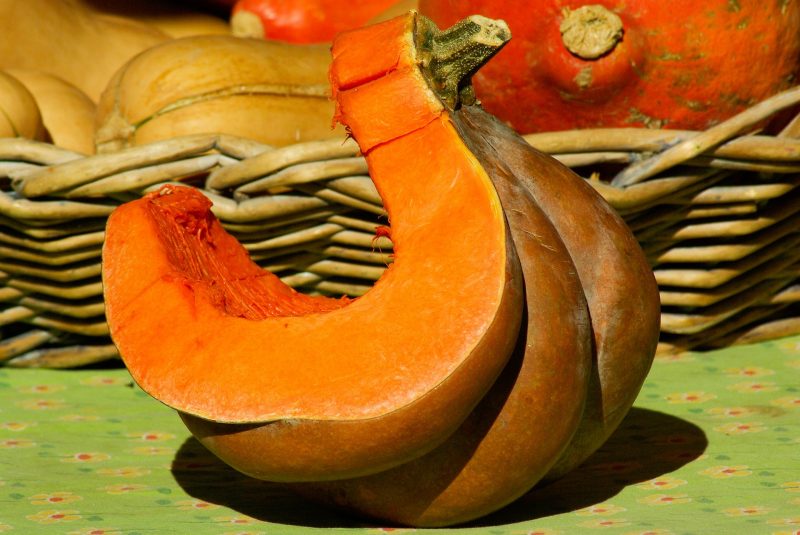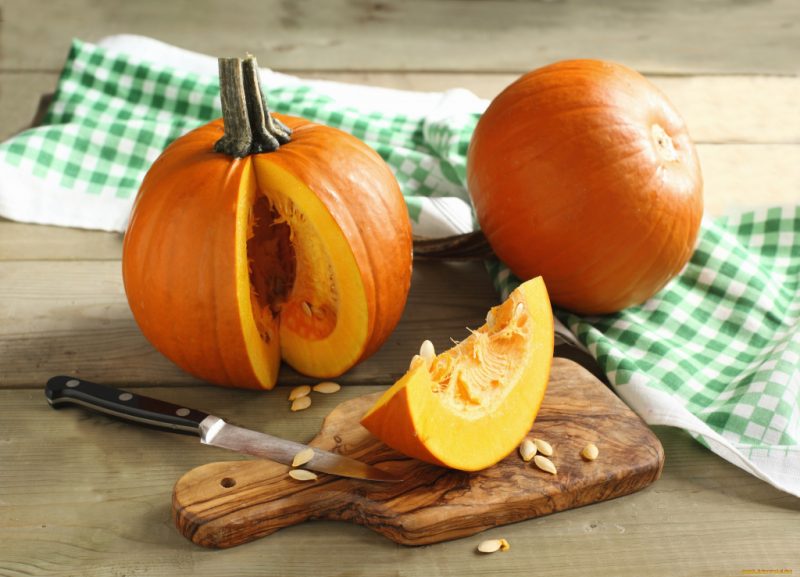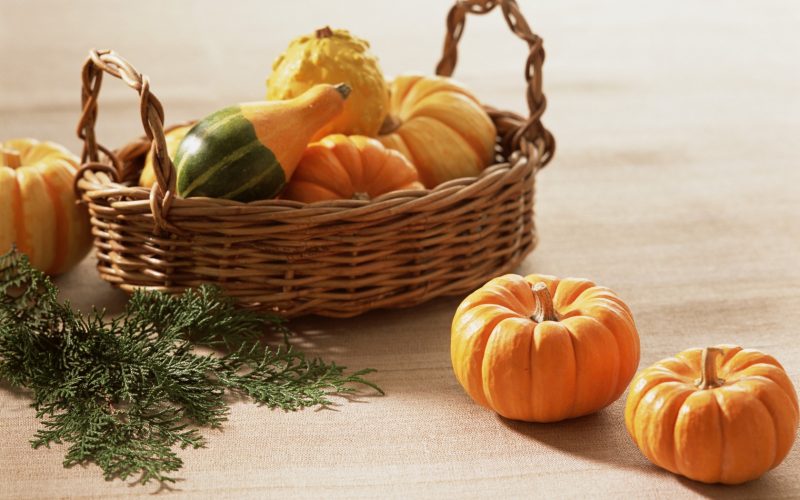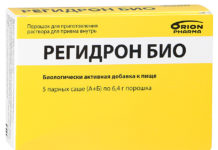Every young mother carefully applies to her diet, because the state of the crumbs that feed on mother's milk depends on the quality of the consumed products. Many dishes for this category of women during lactation are prohibited. Are mothers allowed to use pumpkin for breastfeeding?
Material Content:
Can a pumpkin be breastfed
There is no strict ban on the use of an orange fetus by a nursing mother. Pumpkin is a delicacy useful in all respects, and this applies not only to the pulp, but also to pumpkin seeds. Fatty acids, a complex of vitamins, trace elements in the composition of the vegetable have a beneficial effect on the body of the mother and her unborn baby.

Thus, the answer to the question whether a pumpkin can be breastfed is positive.
What is useful vegetable for mom and baby

A systematic moderate eating of pumpkin or dishes based on it has an exclusively positive effect on the body:
- Improves the functionality of the digestive tract. Fiber in the vegetable regulates the functionality of the digestive organs.
- Saturates the body's system with potassium, zinc, iron, phosphorus and other elements.
- Helps to improve the functionality of the heart and blood vessels.
- It has a diuretic effect. Since pumpkin is 90% water, the diaphoretic effect can also be attributed here.
- Helps fight fatigue, insomnia, stress.
- Helps stop postpartum hemorrhage.
- Improves the condition of hair and nails, complexion and skin condition of a nursing mother.
- Helps to cope with constipation due to the content of pectins.
Pumpkin juice: benefits and harms
Pumpkin juice is rightly recognized as a healthy firming drink.Vitamin C, which is part of the vegetable, strengthens the immune system and helps my mother’s body fight infections. How to drink pumpkin juice to improve your health?

- In order to strengthen immunity. You should drink a glass of pumpkin juice once a day. This is best done in the morning or at lunch half an hour before a meal.
- To combat insomnia. A tasty and healthy drink is best drunk an hour before bedtime. Pouring pumpkin juice into a glass, it can be diluted with a small amount of honey.
- To lower the temperature and fight inflammation. In the period of frequent cases of infectious or colds, it is recommended to use a glass of pumpkin juice per day. Important! Pumpkin therapy is not a substitute for treatment prescribed by your doctor. It can only be regarded as an auxiliary healing agent.
- To eliminate constipation. It is enough to drink one glass of juice a day to forget about constipation, which often torment newly minted mothers for a long time.
How to cook pumpkin
It is no secret that new substances that reach the baby through breast milk can cause allergies or digestive problems.

Attention! To protect the baby from such problems, mom should not eat pumpkin more than 2 times a week. In addition, the acquaintance of the baby with a pumpkin through mother's milk should take place no earlier than in 1 month of life.
Pumpkin young mother can be consumed in almost any form, with the exception of fried.
It is best to eat heat-treated vegetable. There are no less useful substances in such a product than in a fresh one, even if you bake it in the oven or microwave. It’s good for mom to cook baked pumpkin or add this vegetable as a component of cereals and soups.
Also, a nursing woman should take into account several recommendations regarding the use of pumpkin in food:
- Begin to feast on a pumpkin with small pieces.
- The product should be tasted at breakfast. Thus, during the day it will be possible to track the reaction of crumbs to a new dish.
- If the baby tolerates the product normally (no bloating, allergies), you can increase the amount of pumpkin eaten to the volume of ordinary dishes.
Healthy pumpkin dishes

Among the most useful and popular dishes based on pumpkin, it is worth highlighting:
- Baked Pumpkin. Wash the fruit under running water. The inside should be removed along with pumpkin seeds. Cut the pumpkin into slices convenient for consumption, without removing the peel. Spread the pieces down with a sandpaper on a greased form. Bake pumpkin in the oven until crusty.
- Pumpkin with honey and apples. An extended version of baked pumpkin, only a few sweet apples and a handful of raisins should be taken as additional ingredients. Grind pumpkin, apples into cubes, pour into a mold. Add raisins there, pour the mixture with liquid honey and send to bake.
- Pumpkin porridge. Such a delicacy can be prepared both on water and on milk. Any cereal (corn, wheat, rice, etc.) is suitable for cooking. The loose ingredient must be thoroughly washed and soaked in water. Remove pumpkin seeds, peel, then cut into pieces, put in a suitable container. Pour a little water and cook the vegetable until cooked, grind in a blender until smooth. Pour in warmed milk, bring the composition to a boil. Add cereal, add sugar. The dish is cooked over low heat until cooked.
- Pumpkin puree soup. Cut boiled pumpkin in water into pieces, grind to a puree state, add butter, sugar and salt. For cream soup, you can serve sour cream or flavor the finished dish with herbs.
When pumpkin is contraindicated
Pumpkin allergy is a rare occurrence, but it also has a place to be.

In some cases, to avoid negative reactions from your body or the body of a newborn baby, you should consider several recommendations:
- Do not abuse pumpkin dishes.Pumpkin cereals and soups are undoubtedly tasty and healthy, but we should not forget about the possible individual intolerance of the components of the vegetable.
- If the father or mother of the child is allergic to carotene, before eating pumpkins, an analysis should be made to identify allergens in the child. And although this type of allergy is not common, the risk should be minimized, because there is a lot of carotene in the pumpkin.
- You should not drink pumpkin juice for gastrointestinal problems (gastritis, a tendency to diarrhea), especially if these conditions are in the acute stage.
Pumpkin is a hypoallergenic vegetable that is approved for use by nursing mothers. Having previously made sure that the child does not have an allergy to it, a woman can consume pumpkin in volumes that are familiar to her. There are a great many recipes using this fruit, and therefore a young mother may not worry about the diversity of her diet.












